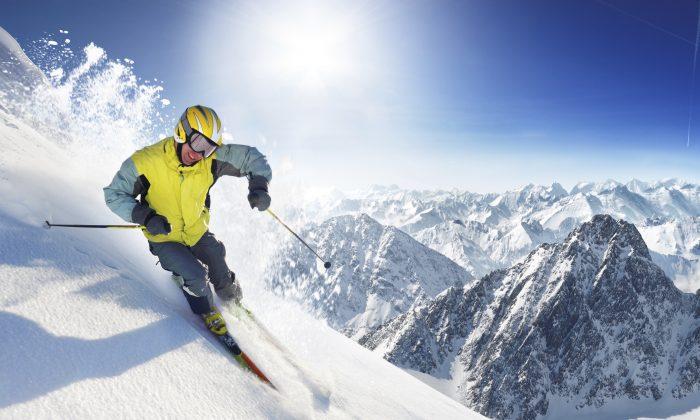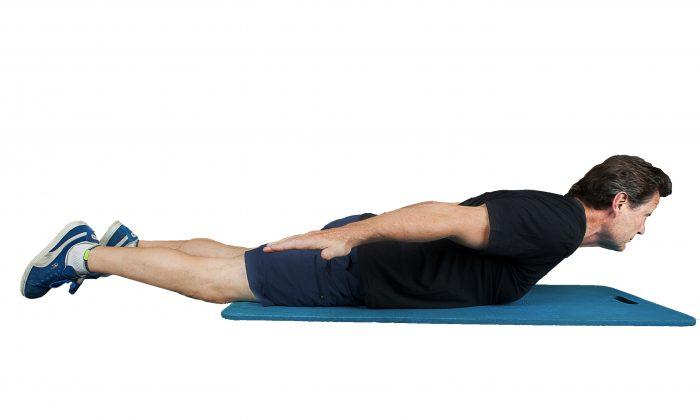Ski season is about to begin and to increase your enjoyment and reduce risk of injury on the slopes it is important to get in good ski shape before you head out.
This workout is designed prepare your body for the rigors of skiing so you don’t ruin your ski trip by getting hurt or being so sore after the first day that you can’t move. Condition yourself at home with these simple exercises that can be done without any equipment and in a short period of time.
These exercises are designed to strengthen the ankles, knees, hips, arms, core, and upper torso, and increase cardiovascular endurance. Do up to three sets of each exercise for a time effective full-body training session.
Each exercise is divided into beginning, intermediate, and advanced levels so you can choose the level of training that best suits you.
Squat With Pulses
Skiing requires your muscles to work eccentrically, meaning the muscle effort is done while a muscle is elongated. While lowering into a squat your thighs are working eccentrically. Staying in the squat position and pulsing will engage both the eccentric and concentric (shortened) muscle movements.
- Stand with feet shoulder distance apart.
- Lower your hips so that the backs of thighs are parallel to floor. Stay in the squat position and pulse up and down just a few inches, 10 times.
- Then return to standing posture.
- Beginners do 5 squats, intermediate 10, and advanced 20 or more.
Perform up to 3 sets.
Push-Ups
Although skiing is predominately a lower body activity, you also have to use your arms for balance and for pushing down through your ski poles.
- Place your hands on the floor so your elbows are bent at 90 degrees.
- Lower down keeping the body straight. Avoid dropping the head or slouching the lower back.
- Beginners start with knees on floor and do 0 push-ups. Intermediate keep knees off the floor and to 10 push-ups. Advanced athletes alternate one foot on floor and do 20 or more.
Perform up to 3 sets.
Plyometric Hop
A plyometric exercises require that both feet be off the floor simultaneously. These hops are designed to improve agility and power. Agility is the ability to change directions quickly and power is how much force you can exert in a given time.
- Stand with feet hip distance apart and draw an imaginary line straight out in front of you on the floor.
- Slightly bend your knees and hop over the line with both feet coming off the floor then landing gently on the forefeet.
- Hop back as quickly as possible to other side.
- Beginners do 10 hops, intermediate 20 hops, and advanced 30 or more hops.
Perform up to 3 sets.
Alternating Front Lunge
Skiers must have good balance. They must have the ability to maintain equilibrium or a neutral balanced body on a moving base. The alternating front lunge requires you to land on one leg, stabilize, balance, push off the floor, then return to the starting position.
- Stand with feet hip distance apart and place hands your behind your head. At all times be aware of keeping your head balanced over your torso.
- Keeping your torso upright, take a step forward bending both front and rear knee to 90 degrees. Avoid having front knee lean over your toes.
- Return to the starting position and alternate legs.
- Beginners do 10 lunges on each leg, intermediate 15 each leg, and advanced do 20 or more.
Perform up to 3 sets.
Plank
The stronger your core muscles the better your posture and performance, and the less fatigue you
will experience. The core is the muscular connection between your hips and shoulders and one of its main functions is to stabilize your lower back. The plank will target the deep core (intrinsic muscles), which surrounds the spine. This plank has three parts: two side movements and a prone movement.
- Lie down on one side with legs stacked and elbow on the floor. Lift your hips off the floor and hold.
- Then without dropping knees to floor, roll into a prone position with both elbows on the floor and hold.
- Finally roll to other side and hold.
- Beginners hold each position for 15 seconds, intermediate 30 seconds, and advanced 45 or more seconds.
Perform up to 3 sets.
Fitness model Jason D'Amelio
Paul Frediani, B.S, ACSM EC-P, senior fitness specialist, the co-owner of Elysium Fitness in NYC and co-author of “Ski Flex.” For information regarding personal training at our facility or in the convenience of your home contact us at ElysiumFitness.net












